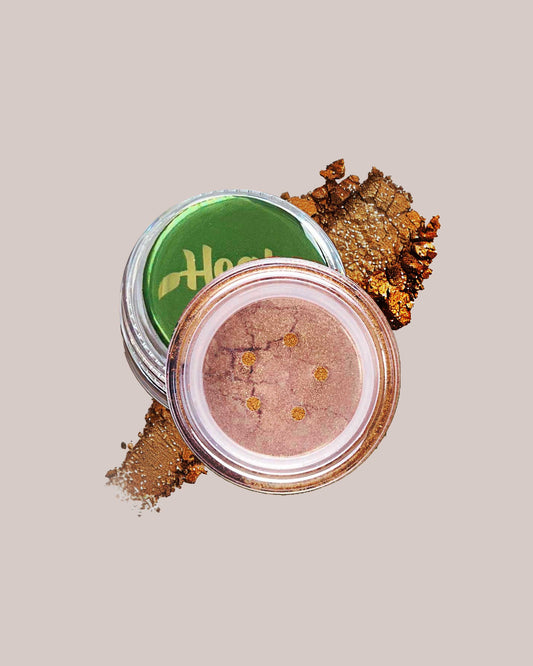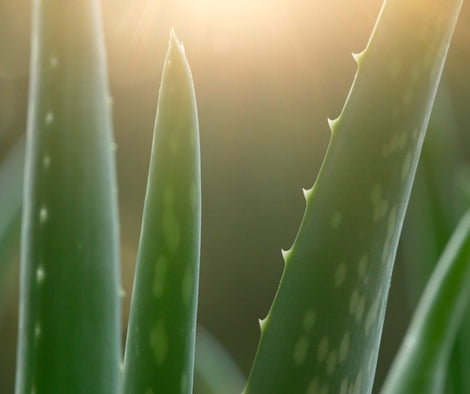Low Oxalate Greens: A Comprehensive Guide to Dietary Oxalates and Their Impact on Health
KEY INFORMATION PREVIEW
- Summary: Oxalates
- High and Low Oxalate Foods
- When and Why a Low-Oxalate Diet
- Benefits of Greens in Your Diet
- Low-Oxalate Greens Are a Must for Some
- Balancing Your Plate with Low-Oxalate Greens
- FAQ and resources
Understanding Oxalates
Oxalates are naturally occurring compounds found in various foods, particularly in plant-based sources. These compounds play a significant role in our diets, but they can also be a source of concern for some individuals. In this guide, we will delve into the world of low oxalate greens and explore the reasons why a low-oxalate diet may be necessary for certain people.
Oxalates are organic compounds found in numerous foods, including fruits, vegetables, and nuts. They are known for their role in the formation of kidney stones, a painful condition that affects millions of people worldwide. However, oxalates are not all bad. In fact, they serve several essential functions in the human body, such as contributing to the formation of antioxidant molecules.
Below is a detailed list of foods that are typically high in oxalates and those that are considered low-oxalate. Keep in mind that oxalate content can vary, so this list provides a general guideline. If you have specific dietary restrictions or health concerns, it's best to consult with a healthcare provider or nutritionist for personalized guidance.

Foods High in Oxalates
High in Oxolates: Spinach
Spinach is one of the highest oxalate-containing foods, whether cooked or raw. For me, personally (Heal Yes! owner), when I had toxic mold exposure and my body was burned with major symptoms, spinach was a big 'no'; when I recovered, I started eating it moderately. Just an anecdote!
High in Oxolates: Rhubarb
Rhubarb stalks are very high in oxalates and should be consumed sparingly.
High in Oxolates: Beets
Beets, especially the greens, contain substantial oxalate levels.
High in Oxolates: Sweet Potatoes
Sweet potatoes have moderate to high oxalate content, especially when cooked.
High in Oxolates: Nuts
Almonds, cashews, and peanuts are among the nuts with significant oxalate levels.
High in Oxolates: Chocolate
Cocoa powder and dark chocolate contain oxalates, though milk chocolate has lower levels.
High in Oxolates: Select Teas
Black tea and some herbal teas, such as peppermint and blackberry, have notable oxalate content.
High in Oxolates: Some Potato Chips
Some commercially processed potato chips may contain added oxalates.
Foods Low in Oxalates
Foods Low in Oxalates: Kale
Kale is a low-oxalate green that provides various nutrients.
Foods Low in Oxalates: Collard Greens
These greens are low in oxalates and are often used in Southern cuisine.
Foods Low in Oxalates: Arugula
Arugula is a peppery low-oxalate green commonly used in salads.
Foods Low in Oxalates: Iceberg Lettuce
Iceberg lettuce has low oxalate levels and is often used as a base for salads.
Foods Low in Oxalates: Cucumbers
Cucumbers are a low-oxalate vegetable suitable for salads and snacks.
Foods Low in Oxalates: Cabbage
Both green and red cabbage are low in oxalates and versatile in recipes.
Foods Low in Oxalates: Broccoli
Broccoli is a low-oxalate cruciferous vegetable rich in nutrients.
Foods Low in Oxalates: Zucchini
Zucchini is a low-oxalate summer squash that can be used in various dishes.
Foods Low in Oxalates: Cauliflower
Cauliflower is another cruciferous vegetable with low oxalate levels.
Foods Low in Oxalates: Celery
Celery is a crunchy, low-oxalate vegetable often used as a snack or in soups.
Please note that this list provides a general overview, and oxalate content can vary based on factors such as growing conditions and preparation methods.
It's vital to consider individual dietary needs and consult with a healthcare provider or nutritionist for personalized dietary guidance, especially if you have specific health conditions or concerns related to oxalates.
When and Why to Consider a Low-Oxalate Diet
Despite the benefits of oxalates, some individuals may need to monitor and reduce their oxalate intake. Kidney stone patients, for instance, are often advised to follow a low-oxalate diet to minimize the risk of stone recurrence. Additionally, those with certain medical conditions or dietary restrictions may find it beneficial to limit their oxalate consumption.
In the following sections, we will explore the sources of dietary oxalates, discuss the factors influencing oxalate absorption, and provide practical tips on incorporating low oxalate greens into your diet. Whether you're exploring a low-oxalate diet for health reasons or simply seeking a better understanding of these compounds, this guide will serve as your comprehensive resource.

Green Goodness: Benefits of Greens in Your Diet
Incorporating greens into your diet is more than just a culinary trend; it's a pathway to improved health and well-being. Greens, often celebrated as nature's nutritional treasures, offer an array of advantages that can elevate your overall dietary profile.
First and foremost, greens are packed with essential vitamins and minerals, making them a valuable addition to any meal. They are an excellent source of vitamins A, C, and K, as well as minerals like potassium, calcium, and iron. These nutrients play vital roles in maintaining healthy skin, promoting proper blood clotting, supporting bone health, and more.
Another notable feature of greens is their rich fiber content, which aids in digestion and helps maintain a feeling of fullness. This can be particularly beneficial for those looking to manage their weight or control their appetite.
Greens are renowned for their antioxidant properties. Antioxidants help protect your cells from damage caused by harmful molecules called free radicals, reducing the risk of chronic diseases and supporting overall health. The chlorophyll present in greens also acts as a natural detoxifier, assisting your body in eliminating toxins and promoting a cleaner, healthier internal environment.
Why Low-Oxalate Greens Are a Must for Some
While greens offer a myriad of health benefits, it's crucial to recognize that not all greens are created equal in terms of oxalate content. For individuals with specific dietary needs or health concerns, low-oxalate greens can be a game-changer.
Low-oxalate greens are a category of leafy vegetables that contain significantly lower levels of oxalates compared to their high-oxalate counterparts. Oxalates are naturally occurring compounds found in various foods, and for some individuals, excessive oxalate intake can lead to the formation of kidney stones. Therefore, those prone to kidney stones or with certain medical conditions may find it essential to opt for low-oxalate greens to minimize their oxalate intake.
Additionally, for individuals following a restrictive diet due to specific health issues or dietary preferences, low-oxalate greens can provide a valuable source of essential nutrients without compromising their dietary goals.
Balancing Your Plate with Low-Oxalate Greens
Balancing your diet with low-oxalate greens is a practical step toward optimizing your nutrition. By incorporating these greens into your daily meals, you can enjoy the numerous health benefits they offer while effectively managing your oxalate intake.
One of the key advantages of low-oxalate greens is their versatility. They can be included in a wide range of dishes, from salads and smoothies to stir-fries and soups. Their mild, pleasant flavors make them easy to incorporate into various recipes without overpowering other ingredients.
Low-oxalate greens are an excellent choice for those seeking to maintain a balanced diet while keeping their calorie intake in check. They provide an abundance of vitamins, minerals, and dietary fiber without adding excessive calories to your meals, making them an ideal choice for weight management and overall health.
Whether you're aiming to reduce your oxalate intake, support your health, or simply explore new flavors, low-oxalate greens have something to offer.
Freshness Matters: Selecting and Storing Low-Oxalate Greens
Ensuring the freshness of your low-oxalate greens is the first step to unlocking their full potential in your meals. In this section, we'll share expert tips on how to choose and store low-oxalate greens to maintain their flavor and nutritional value.
When selecting low-oxalate greens, look for vibrant colors and crisp leaves. Avoid greens with signs of wilting or yellowing, as they may have lost some of their freshness. Opt for organic or locally sourced greens whenever possible to support sustainable farming practices and maximize flavor.
To extend the shelf life of your greens, store them properly. Rinse and dry them thoroughly before refrigerating, and consider using airtight containers or produce bags to prevent moisture buildup. Learn how to keep your greens fresh and ready to enhance your meals with their goodness.
Preparing Low-Oxalate Greens with Flair
Once you've selected and stored your low-oxalate greens, it's time to work your culinary magic. In this section, we'll explore various preparation methods and offer a repertoire of tantalizing recipe ideas to make your greens shine.
Low-oxalate greens are incredibly versatile and can be enjoyed in a multitude of ways. Whether you prefer them raw, sautéed, steamed, or blended into smoothies, we've got you covered. Discover the best cooking techniques to preserve flavor and nutrients while ensuring the perfect texture.
From vibrant salads to hearty soups and savory side dishes, we'll introduce you to a diverse array of recipes that showcase the delectable potential of low-oxalate greens. Get ready to elevate your culinary creations and impress your taste buds.
Green on Your Plate: Creative Ideas for Enjoying Low-Oxalate Greens
In this final section, we'll help you get creative with low-oxalate greens, inspiring you to incorporate them into your daily diet with enthusiasm. Whether you're a seasoned chef or a kitchen novice, these ideas will spark your culinary imagination.
Consider crafting nutritious green smoothies that combine low-oxalate greens with your favorite fruits and superfoods, creating a delicious and healthful beverage to kickstart your day. Alternatively, explore innovative ways to use greens as a wrap or stuffing, adding a nutritious twist to your favorite dishes.
With these tips, tricks, and recipes in hand, you'll not only prepare low-oxalate greens with confidence but also savor the journey of incorporating these nutritious gems into your daily meals. Get ready to embark on a culinary adventure that's as delicious as it is health-conscious!
Blend Your Way to Health: Nutrient-Packed Green Smoothies
Unlock the potential of low-oxalate greens by incorporating them into delicious and nutritious green smoothies. Whether you're a health enthusiast or simply seeking a refreshing start to your day, these green concoctions will inspire your palate and invigorate your body. In this section, we'll share enticing green smoothie recipes that combine low-oxalate greens with your favorite fruits and superfoods, making every sip a burst of flavor and wellness.
Greens Beyond the Plate: Wraps and Stuffing Redefined
Think beyond the salad bowl and reimagine the role of low-oxalate greens in your meals. We're here to challenge your culinary creativity by showcasing innovative ways to use greens as wraps and stuffing.
Whether you're looking to reduce your carb intake or infuse a nutrient-packed twist into your favorite dishes, these ideas will elevate your meals to new heights. Explore inspired recipes that turn low-oxalate greens into versatile wrappers and flavorful fillings, adding a nutritious and flavorful dimension to your dining experience.
Delicious Path to Wellness
Whether you're a seasoned chef or a kitchen novice, these ideas will spark your culinary imagination and inspire you to incorporate these nutritious gems into your daily meals with enthusiasm. Get ready to embark on a culinary exploration that's as delicious as it is health-conscious!
Strategies for a Low-Oxalate Diet
Mastering a low-oxalate diet doesn't mean sacrificing nutritional balance. Strike the right balance between oxalate reduction and essential nutrients, ensuring you maintain optimal health throughout your dietary journey, with these tips:
Meal Planning and Long-Term Success
Explore practical considerations for planning well-rounded, satisfying meals while adhering to your dietary goals. Learn how to adapt your eating habits for sustained success, ensuring your low-oxalate journey becomes a seamless part of your lifestyle.
Expert Guidance: When to Consult Healthcare Providers and Nutritionists
Seeking expert guidance is an important aspect of managing a low-oxalate diet effectively. Understand when professional assistance can enhance your dietary journey and ensure your health remains a top priority.
A Potential-Healthier You with Low-Oxalate Greens
As we conclude this comprehensive guide, we recap the importance of understanding and managing oxalate intake for improved health. Embrace the potential of low-oxalate greens as a delicious and nutritious addition to your diet.
We invite you to take the first step toward a healthier you by incorporating these greens into your meals. Additionally, discover a call-to-action for further reading and consultation with health professionals to continue your journey towards optimal well-being.
FAQ Regarding Low-Oxalate Food and Diet
What exactly are oxalates, and why should I be concerned about them in my diet?
Oxalates are natural compounds found in many foods, especially plant-based sources like leafy greens, nuts, and some fruits. While they have various functions in plants and are not inherently harmful, some people need to monitor their oxalate intake. High oxalate consumption can increase the risk of kidney stone formation, making it important for individuals prone to kidney stones or certain health conditions to be mindful of their oxalate intake.
Which foods are high in oxalates, and which are considered low-oxalate?
Foods that are high in oxalates include spinach, rhubarb, beets, almonds, and sweet potatoes. On the other hand, low-oxalate foods include kale, collard greens, arugula, and iceberg lettuce. It's important to note that oxalate levels can vary within food types, so it's advisable to consult reliable resources or a healthcare provider for a comprehensive list.
Can I still get essential nutrients while following a low-oxalate diet?
Yes, it's possible to maintain a balanced and nutritious diet while following a low-oxalate eating plan. Low-oxalate greens and other low-oxalate foods provide valuable nutrients like vitamins, minerals, and dietary fiber. Additionally, you can supplement your diet with vitamin-rich foods that have lower oxalate content, such as citrus fruits.
Are there any side effects or risks associated with a low-oxalate diet?
While a low-oxalate diet can be beneficial for some individuals, it's essential to approach it with caution. Drastic reductions in oxalate intake can potentially lead to nutrient deficiencies, particularly in calcium. It's advisable to consult with a healthcare provider or nutritionist before making significant dietary changes. They can help you create a balanced meal plan that meets your nutritional needs.
Can I enjoy low-oxalate greens raw or do they need to be cooked?
Low-oxalate greens can be enjoyed both raw and cooked. Cooking methods like boiling or steaming can reduce oxalate levels in greens, making them a suitable choice for those looking to minimize oxalate intake. However, consuming them raw in salads or smoothies also provides essential nutrients and a refreshing taste.
How can I tell if a low-oxalate diet is working for me?
Monitoring your health and progress while on a low-oxalate diet is essential. If you've been following the diet to manage kidney stones or a specific health condition, regular check-ups with your healthcare provider can help track your progress. Additionally, paying attention to any changes in symptoms or overall well-being can indicate the effectiveness of the diet.
Can I cheat occasionally on a low-oxalate diet?
Occasional deviations from a low-oxalate diet may not be harmful for everyone. However, if you have a specific medical condition or are at high risk for kidney stones, it's crucial to consult with your healthcare provider regarding occasional indulgences. They can provide guidance on moderation and risk management.
Remember that individual dietary needs can vary, and consulting with a healthcare provider or nutritionist is always advisable before making significant dietary changes, especially if you have specific health concerns or conditions.
References and Resources for In-Depth Knowledge
For those eager to learn more about low-oxalate diets, here are a few resources at your fingertips.

















